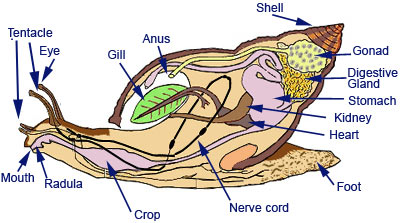Question #1f956
1 Answer
They differ in their anatomy (muscular foot and radula), potential terrestrial habit.
Explanation:
Gastropoda, a sub-group of molluscs that comprises slugs, snails and some sea worms, differ from their relatives in a few ways. The first, and more obvious, is their anatomy: they may or may not present an evident shell, but all of them have their mantle restricted to their heads - which, by the way, is frontal and much more distinguishable from other molluscs. They also have a common characteristic that sets them appart - their foot. All gastropoda have, under their abdominal region, a muscular foot used for locomotion.

Another unique characteristic of gastopods is their radulae. The radula is located in their mouths, and is comprised of many small calcareous "teeth" which they use in feeding. The most common use of the radula is to scratch algae from rocks, but there are some interesting adaptations to this structure - with the single, harpoon-shaped tooth radula of the Conus snails standing out due to these poisionous animals' unique hunting strategy .
At last, the most obvious difference between the Gastropoda and other molluscs is their potential ability to live on land. Although they still require a highly humid environment in order to respirate and reproduce, they are the single group of molluscs which has evolved and adapted themselves to the terrestrial life. Which means that snails and slugs are common sight in our garden, while we'll have a hard time to find an octopus or oyster in the same place!
